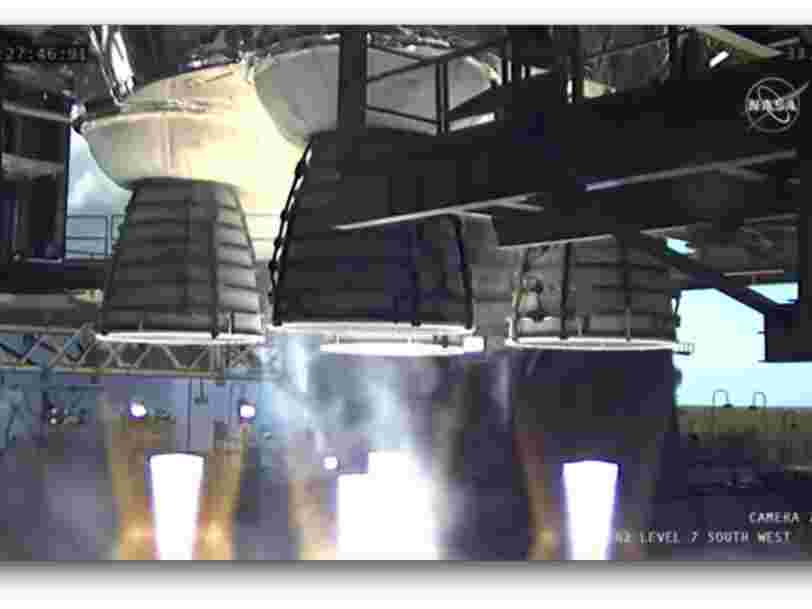A critical test of NASA's moon rocket ended abruptly due to an engine problem, possibly ending hopes of launching in 2021
Morgan McFall-Johnsen- NASA
-
Recevoir tous les articles sur ce sujet.
Vous suivez désormais les articles en lien avec ce sujet.
Voir mes sujets suivisCe thème a bien été retiré de votre compte

The Space Launch System's engines were supposed to fire together for eight minutes, but they abruptly shut down after about one minute.
- NASA encountered an engine problem during a critical test of the core stage of its moon rocket on Saturday.
- The rocket, called Space Launch System, was scheduled to launch in November 2021, kicking off the Artemis program and setting NASA up to send humans back to the moon for the first time since 1972.
- This engine issue could delay that launch, and push back the timeline for the next crewed moon mission.
- Visit Business Insider's homepage for more stories .
This is a developing story. Please check back for updates.
NASA's mega-sized moon rocket encountered an engine issue during a critical test on Saturday. The error could delay the rocket's first launch to 2022.
The rocket, called Space Launch System, is designed to eventually stand 365 feet (111 meters) and ferry astronauts to the moon sometime in the mid- to late-2020s. The system is an essential piece of a larger program called Artemis, a roughly $30 billion effort to put boots back on the lunar surface for the first time since 1972. NASA has spent about $18 billion developing the rocket.
The rocket's core stage - the system's largest piece and its structural backbone - was assembled and heavily strapped down at Stennis Space Center in Bay St. Louis, Mississippi, on Saturday for a critical "hot fire" test. For the first time, the rocket was ready to simultaneously fire its four powerful RS-25 engines as it would for launch.
The fuel tanks were filled with 733,000 gallons of cryogenically chilled propellant - liquid oxygen and hydrogen. The engines, which used to help propel NASA's fleet of space shuttles, ignited at about 5:27 p.m. EST for what was supposed to be an eight-minute test.
But about one minute and 15 seconds later, the engines abruptly shut down. Shortly before the shut-down, a test conductor noted that the fourth engine was experiencing an MCF, or "major component failure."
The whole thing was captured on NASA's live broadcast:
The hot fire was supposed to be the eighth and final step in NASA's "Green Run," a program designed to thoroughly test each part of the core stage ahead of SLS's first launch, called Artemis 1 - an uncrewed test flight currently scheduled for November 2021.
But that timeline may be unrealistic now. NASA was planning to ship the rocket to Kennedy Space Center in Florida in February, where workers would stack all the segments of the two boosters required for sending Artemis 1 around the moon.
It's unclear how long it will take NASA to correct the engine error and get the core stage to Florida now. The agency may have to redo the hot fire test.
The core stage is the world's largest and most powerful rocket stage, according to NASA. It hosts five mains sections, including a 537,000-gallon (2 million-liter) tank for liquid hydrogen, a 196,000-gallon (742,000-liter) tank for liquid oxygen, four RS-25 engines, avionics computers, and other subsystems.
Boeing is the core stage's lead contractor, and Aerojet Rocketdyne is responsible for its RS-25 engines.
Dave Mosher contributed reporting.
Inscrivez-vous gratuitement à notre newsletter quotidienne
Via PakApNews